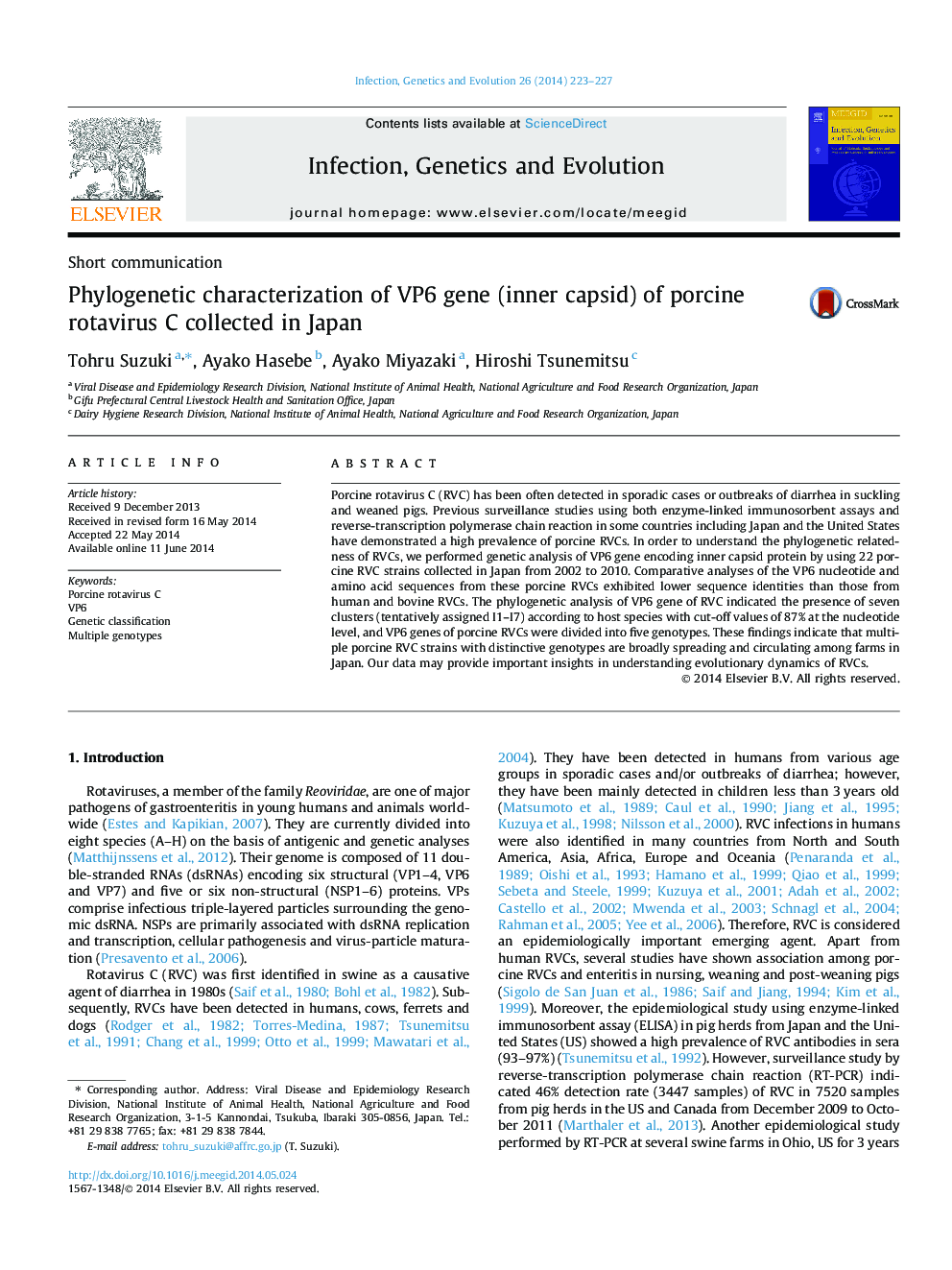| Article ID | Journal | Published Year | Pages | File Type |
|---|---|---|---|---|
| 5909683 | Infection, Genetics and Evolution | 2014 | 5 Pages |
â¢We analyze whole sequences of VP6 genes from 22 porcine RVCs collected in Japan from 2002 to 2010.â¢The phylogenetic analysis of RVC VP6 including our data indicates the presence of seven clusters.â¢Our analysis defines three new porcine genotypes in addition to classical porcine genotype.â¢We imply porcine RVCs with several different genotypes may be spreading and maintaining worldwide.
Porcine rotavirus C (RVC) has been often detected in sporadic cases or outbreaks of diarrhea in suckling and weaned pigs. Previous surveillance studies using both enzyme-linked immunosorbent assays and reverse-transcription polymerase chain reaction in some countries including Japan and the United States have demonstrated a high prevalence of porcine RVCs. In order to understand the phylogenetic relatedness of RVCs, we performed genetic analysis of VP6 gene encoding inner capsid protein by using 22 porcine RVC strains collected in Japan from 2002 to 2010. Comparative analyses of the VP6 nucleotide and amino acid sequences from these porcine RVCs exhibited lower sequence identities than those from human and bovine RVCs. The phylogenetic analysis of VP6 gene of RVC indicated the presence of seven clusters (tentatively assigned I1-I7) according to host species with cut-off values of 87% at the nucleotide level, and VP6 genes of porcine RVCs were divided into five genotypes. These findings indicate that multiple porcine RVC strains with distinctive genotypes are broadly spreading and circulating among farms in Japan. Our data may provide important insights in understanding evolutionary dynamics of RVCs.
